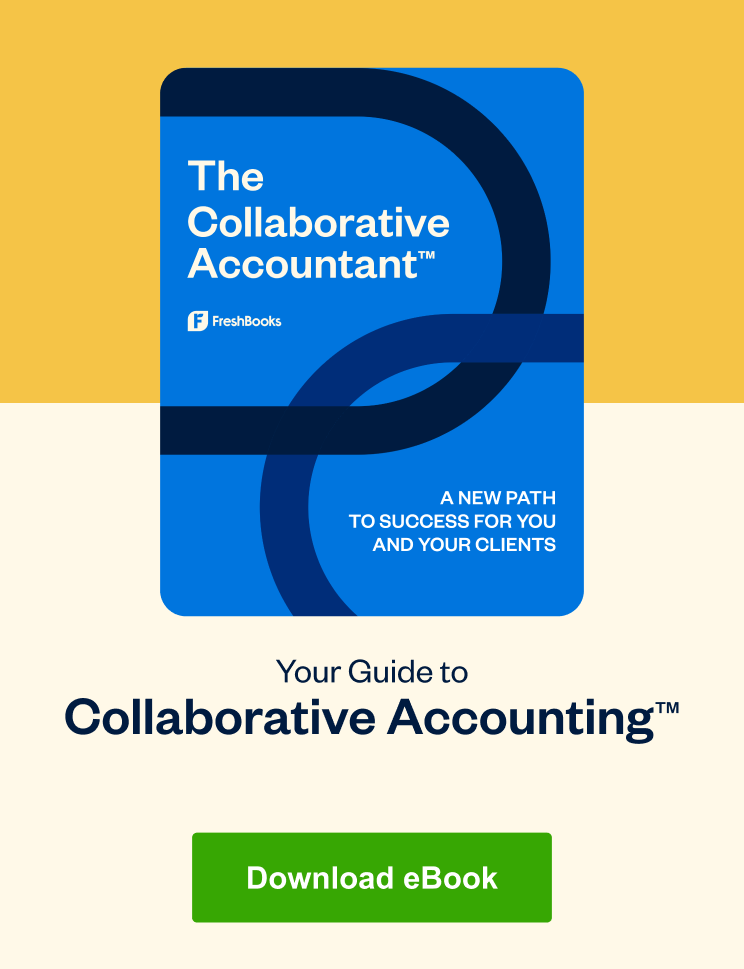What is a value-based pricing strategy and is it right for your business? A guide to the pros, cons, and strategies to get started.

In recent years, accounting professionals have begun switching out hourly billing pricing models in favor of a different strategy—and for good reason. If you want to grow your practice, position yourself as an expert with current and prospective clients, and make more money in the process, you need to price your services according to their value.
According to a Thomson Reuters Institute survey of tax and accounting firm professionals, value-based pricing will gain the most traction in 2024. In this model, charges are based on expertise, guidance, and results rather than time spent.
Let’s look at value-based pricing, why it’s ideal for financial professionals, and how to implement it in your practice.
Table of Contents
What Is Value-Based Pricing?
When you use value-based pricing, you evaluate the value of a product or service to your customer and determine a cost that is in line with how much it is worth to them.
Unlike cost-based pricing or cost-plus pricing strategies–which factor your time, costs, and historical pricing into the pricing calculations–value-based pricing means you might charge different clients different fees for the same service. How is this possible? Let’s look at an example.
Client A and Client B both hire you to build out their accounting systems and processes. Based on what you know about Client A’s relatively new business, you estimate you’ll save them at least 15 hours and $5,000 a month by setting up their accounting workflows. So, you charge them $3,000 for the service.
Because Client B is a larger, more established company, you estimate your services will bring in even more savings—to the tune of $10,000 and 35 accounting hours saved each month. Client B agrees to pay you $7,000 for services rendered because the value of your offering is greater for them.
Types of Value-Based Pricing
Value-based pricing is generally categorized into two distinct types: Good-value pricing and value-added pricing.
Good-Value Pricing
This approach involves offering the right combination of quality and service at a fair price. It’s about delivering good value for the money, which might involve combining several services for one flat rate.
For example, instead of charging separately for tax filing, consultations, and document preparation, you could bundle these services together and charge an attractive, all-inclusive price. This would give clients a clear understanding of what they’ll receive and ensure they’re getting a good deal for the quality and scope of services provided.
You might also offer other service packages, such as basic, standard, and premium, where the basic package provides essential services at a lower price point, appealing to cost-conscious clients while still delivering solid value.
Value-Added Pricing
Using this strategy, you set higher prices and justify them by offering added value through additional features, superior service, or a unique selling proposition. The focus is on differentiating your services in a way that justifies a premium price.
An example of value-added pricing would be offering premium accounting services that include not only standard bookkeeping and tax preparation but also personalized business planning, year-round advisory support, and advanced tax strategies.
This added value justifies the higher price tag because your clients receive a more comprehensive and tailored service that goes beyond basic accounting, ultimately helping them grow their business.
Tiered Value-Based Pricing Model
Tiered pricing models offer customers multiple pricing levels, each with increasing features, services, or benefits (in contrast to pay-per-service pricing).
Clients choose a tier that best fits their needs and budget, allowing businesses to cater to a broader audience while maximizing revenue by offering premium options.
Read more about how to build a tiered value-based pricing model for your practice.
Common Misconceptions About Value-Based Pricing
It’s just about charging more. Value-based pricing is about aligning prices with the perceived value to the customer, which could mean charging more, less, or the same as competitors depending on the unique value proposition offered.
Customer value is easy to measure. It can be challenging to accurately gauge what different customers value most and how much they’re willing to pay for it. It often requires in-depth market research, customer feedback, and continuous adjustments.
It’s static. Value-based pricing is dynamic and should be regularly reviewed and adjusted based on changes in customer preferences, market conditions, and competition.
It’s only about the product or service. This strategy encompasses more than just the tangible work that you deliver. A value-based price includes the entire customer experience, including your availability, reliability, and the ability to offer proactive insights to your clients.
Accounting Examples of Value-Based Pricing
Following are some examples of value-based pricing for different clients and firms.
Tailored CFO Services
An accounting firm offers virtual CFO services to small and medium-sized businesses. Instead of charging a flat rate for general accounting tasks, the firm assesses the individual financial needs and growth potential of each business.
For a startup focused on rapid scaling, you might offer strategic financial planning, cash flow management, and investor reporting. Taking a value-based approach, you’d set these services at a higher price point in line with how critical they are to the business’s success.
Industry-Specific Expertise
Value-based pricing is ideal if you have a specialty or accounting niche. An accountant who specializes in the healthcare industry, for instance, might offer tailored tax planning and compliance services for medical practices. Since healthcare providers face unique financial regulations and tax challenges, they could charge higher fees for specialized knowledge and guidance. The premium pricing reflects expertise in navigating complex industry-specific regulations, which could save the business significant amounts in fines or missed deductions.
Outcome-Based Pricing
An accountant working with a business on a major tax audit or financial restructuring might use outcome-based pricing. Instead of billing by the hour, you’d charge based on the financial benefits realized from your work. For instance, if you help a company save a substantial amount of money in taxes or recover from a financial crisis, your fee could be a percentage of the savings or recovery amount.
Comprehensive Financial Packages
An accounting firm might offer a “business growth package” that includes not only bookkeeping and tax filing but also quarterly financial health reviews, personalized financial advice, and annual business strategy sessions. This package could be priced higher than standard accounting services because it provides ongoing, proactive support that helps the business grow more efficiently and avoid financial pitfalls.
Technology Integration and Automation
Setting up accounting software and integrations, automated payroll, invoicing, and expense tracking systems, and implementing a Collaborative Accounting™ model are all high-value services. You could charge a premium for them because they streamline business operations, reduce manual errors, and save significant time over the long term for your client’s business.
Value pricing really is more of an art than a science.
—Brian Clare, Blueprint Accounting
Will Value Pricing Work for All Accounting Firms?
A value-based pricing model doesn’t work for everyone—and here’s why.
Offering each client a unique rate based on their situation takes much more time to figure out compared with hourly billing or fixed pricing (where you charge the same rate for a service, regardless of how long it takes to complete).
So, you may want to avoid this method if you regularly receive high volumes of work or are experiencing rapid growth. In these situations, the time it takes to determine the value you’d bring and submit your proposal may slow you down or cause bottlenecks in your client intake process.
It also takes years of experience to accurately estimate the value of a financial service and effectively communicate that to prospects. So, value-based pricing may not work best if you’re just starting out or have little experience with pricing.
“I love processes and systematizing things, so when I first started, I thought I could systematize value pricing,” said Clare. “What I was really doing was fixed-fee pricing. And as I started learning more and more about value pricing and having more discovery calls with leads, I began to realize it really is more of an art than a science. And that’s where experience comes into play.”
But with practice comes progress. Clare’s advice for those who want to get started with value-based pricing? “You have to keep doing this even when it feels uncomfortable in order to push past your boundaries, learn something new, and get better at it. Without practice, you will never get better.”
Create a Value-Based Tiered Pricing Structure in 3 Steps
If you’ve decided that this pricing method is right for your accounting practice, follow these 3 steps for packaging bookkeeping services and more.
1. Do Your Research
First, you’ll need to gather information about your market position to determine what combination of services and prices to include in your pricing structure. This initial market research will give you a better understanding of your customers, your business, and your competitors so you can put together a comprehensive yet competitive set of service packages.
Start by getting to know your current and prospective clients better. Ask them about their problems and business needs, look at the services they tend to hire you for, and consider whether they can benefit from any complementary services.
Then, analyze your business finances. Review your expenses, project profitability, and revenue for insights on what services to keep and how much to charge for them moving forward.
Finally, get to know the competition. The prices your competitors charge show you how much people are willing to pay for the services they offer while studying their workflow and service packages themselves can reveal new opportunities to set yourself apart from these firms.
2. Create Your Service Packages
Use the information you gathered in the previous step to build your accounting and bookkeeping price packages.
Many companies, including FreshBooks, follow a “good, better, best” pricing approach where each consecutive tier offers additional value for an accordingly higher price. If you decide to go this route, consider what combination of services, deliverables, and features your clients would need in each tier to solve their problems and get the results they want.
Before you move on to the next step, don’t forget to define the scope of each package. You don’t want to find yourself stuck in unprofitable contracts doing work you didn’t agree to because you didn’t set your boundaries beforehand.
3. Price Your Service Offerings
Now it’s time to put prices on your accounting and bookkeeping service packages. This is no small feat in itself, considering the impact this will have on your business. Price your services too high, and business will grind to a halt. Price them too low, and your profits will disappear.
The unique problem with value-based pricing is that the rate you offer each client could be specific to their circumstances. Because there’s no tried-and-true formula for determining value-based prices, it’s important to go with what feels right to you and your client.
Justice takes a similar approach with her clients: “I consider the effort (including time) to do the task and match this with a price that I feel is fair. I don’t lay out savings or promises to the client based on money. I do provide the client with details of what services they’re receiving for the price,” she said.
Tips for Switching to a Value-Based Pricing Strategy
Moving your firm’s approach from an hourly rate or a fixed-fee model to value pricing also requires a change in how you work and how you view your business.
Ask Clients the Right Questions in Your Discovery Calls
“What you think the customer needs is not always what the customer thinks is valuable, and value drives price,” shared Chris Hervochon, CPA, CVA, the owner of bookkeeping, tax, and advisory agency Better Numbers. “It’s important to learn how to have those conversations on the front end and ask probing questions. Generally, those questions should start with ‘what’ or ‘how.’”
By identifying the problems your prospects want to solve and positioning yourself as the right person to do it, you’ll make it easier for them to accept your proposals.
Experiment With Your Pricing
Once you decide on your new pricing structure, consider testing it out with prospective clients to determine which combinations work best, and/or asking a few of your current clients for feedback.
Then, consider rolling out your new pricing structure slowly—focusing on 1 or 2 clients at a time or starting out with smaller, easier accounts—so you can work out the kinks and adjust your packages based on the feedback you receive.
Take your time. It’ll likely take lots of trial and error before you land on your ideal pricing structure. And don’t be afraid to continue experimenting with your pricing later on.
Get a Little Help From Your Peers
Value-based pricing strategies take time, effort, and lots of strategic thinking to get right. Make the process as painless as possible by taking advantage of support from accounting professionals who have been there and done that.
The FreshBooks Accounting Partner Program is a dedicated group of progressive accountants and bookkeepers with an active online community. Learn more about the partner program, and sign up to join the discussion and get guidance on pricing and other practice-related questions from like-minded accounting professionals.

Written by Feli Oliveros, Freelance Contributor
Posted on June 5, 2023
 Is It Time for a Price Increase? Here’s How to Tell Your Clients
Is It Time for a Price Increase? Here’s How to Tell Your Clients From Client Management to Client Relationship-Building, for Accountants
From Client Management to Client Relationship-Building, for Accountants The Fastest-Growing Niche Markets for Accountants
The Fastest-Growing Niche Markets for Accountants





